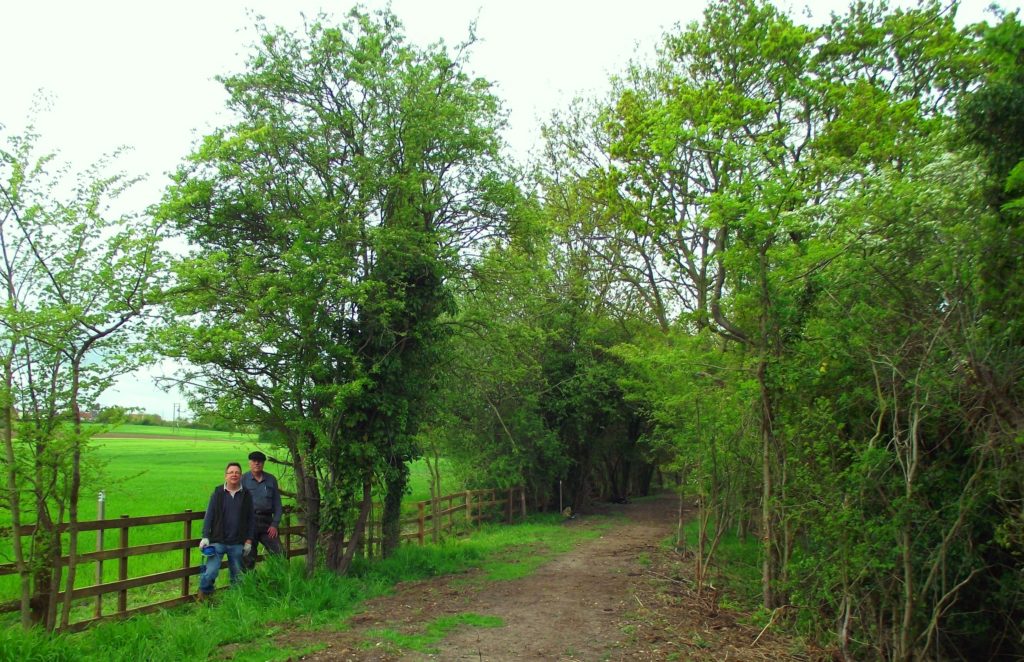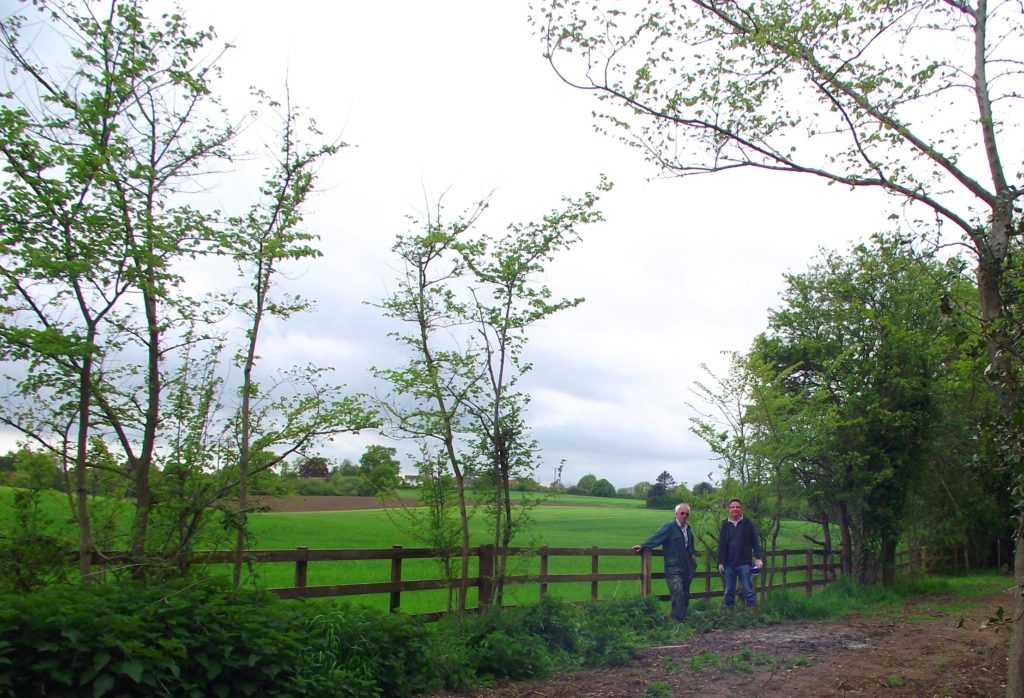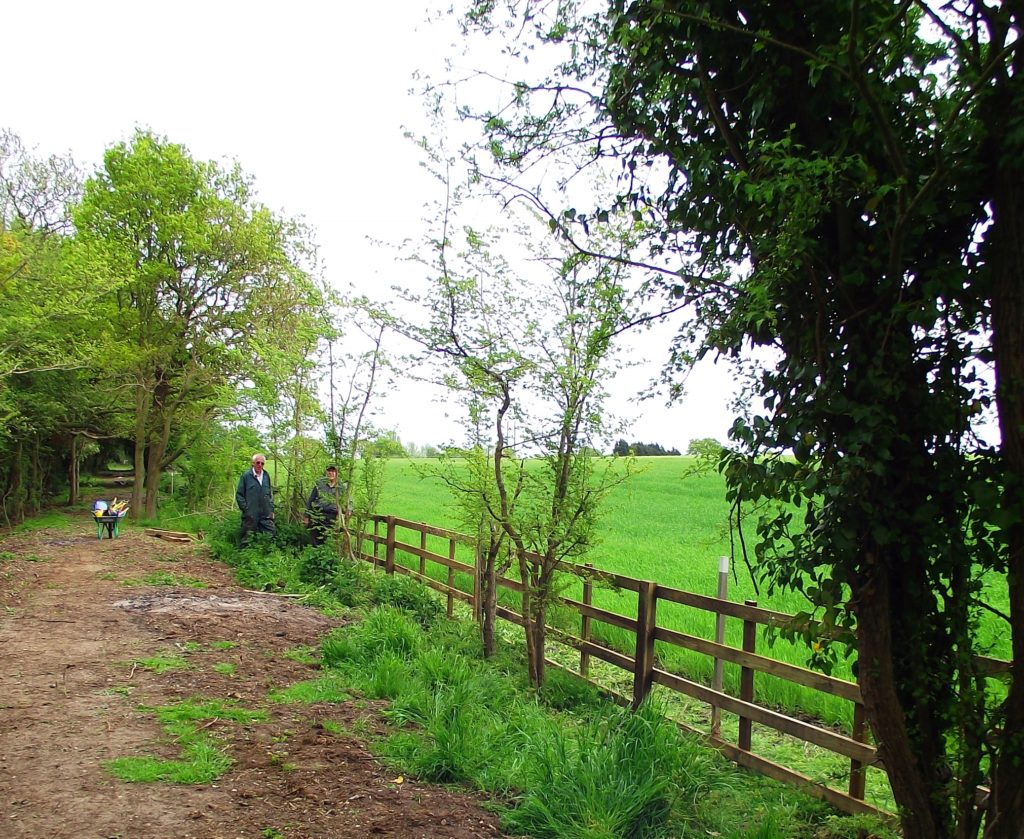
A large team of Trust volunteers – undaunted, alike, by the dubious decisions of some bureaucrats, and general unpleasantness and ignorance from the opposition (elements of which have recently taken to photographing – by “paparazzi” long lens – everything that we do, which shows a gratifying degree of interest in a local charity by the local population) – had a particularly good couple of days at Wenhaston on Saturday and Wednesday. A small rain interruption at the weekend was welcome, anyway, as it will help the vegetation to grow faster – although that will also mean a lot more strimming!
Toby did the first major strim of the season, through the station site, along the pedestrian access path, and along the trackbed section. John H and John B pretty-well finished the remaining clearance of tree boles for logging, and the few remaining small piles of dead bramble and assorted rubbish.
The rest of us got stuck in to the restoration of the SR post-and-rail fencing on the southern boundary. The first few panels (each of which is about 12 feet) had had their post holes dug by the small 360 machine we hired – but, as this was also the most tree-surrounded part of the fence line – it was not an easy section. So we don’t damage any live trees – or any other vegetation which has grown up since 1942 (when the rails were lifted) – we are weaving the fencing through, between, and each side of the trees: the result looks as if we were either blind or drunk (or both), as the fencing swerves madly up and down, through, and in and out. But at least it proves our credentials as a team with a light touch on the landscape!
Anyway, having got through that section, we are now out into relatively open country (albeit now hand-digging all the holes), where the fencing can be (by and large) in its proper place. This is – following the landscape – at the foot of the embankment, or at the top of the cutting (we have both), making sure to leave ample headland for our neighbouring farmer to the south. Luckily, we have quite a few posts – or parts of posts – left in situ, so we can follow the original line. In fact, though this is of course very good practice, it’s also in our interest – we don’t want to have spent months of our lives rebuilding fencing only to have it trashed by a sideswipe from a plough or cultivator!
We got on so well that (and I blame myself for this), we are now having to bring timber back from the driftway crossing site – to which we have already moved it all once – and in the process of demolishing the timber stack, we also demolished our seating area for lunch. At the present rate, in a month or so, another trip to Scotland will have to be organised to collect another couple of tonnes of fence rails and posts – as the gap between the two fencing sections reduces.


